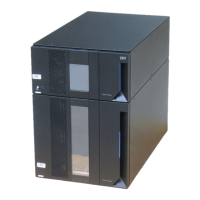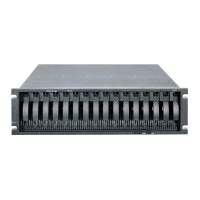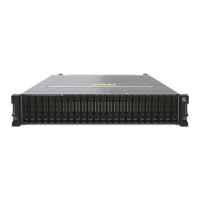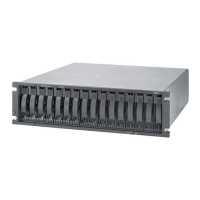Chapter 4. IBM Flex System V7000 Storage Node initial configuration 151
You should have a minimum of three IP addresses for initial system configuration. These
IP addresses can be of either the IPv4 or IPv6 standards; one for management and two for
service access to each of the control canisters.
A minimum of one and up to four IP addresses are needed if iSCSI attached hosts access
volumes from the IBM Flex System V7000 Storage Node. They are in addition to the three
IP addresses needed for the management of the system.
4.1.2 SAN configuration planning
The SAN fabric is an area of the network that contains routers and switches. The IBM Flex
System V7000 Storage Node has connections for up to eight 8 Gbps Fibre Channel
connections per control enclosure. A SAN is configured into a number of zones. A device
using the SAN can communicate only with devices that are included in the same zones that it
is in. A Flex System V7000 Storage Node can have several distinct types of zones: a system
zone, host zones, and disk zones. The intersystem zone is optional. Some operating systems
cannot tolerate other operating systems in the same host zone, although you might have
more than one host type in the SAN fabric. For example, you can have a SAN that contains
one host that runs on an IBM AIX operating system and another host that runs on a Microsoft
Windows operating system.
After the IBM Flex System V7000 Storage Node, hosts, and optional external storage
systems are connected to the SAN fabrics, zoning needs to be implemented. See Chapter 11,
“SAN connections and configuration” on page 431 for more information.
The recommended SAN configuration is composed of a minimum of two fabrics with all IBM
Flex System V7000 Storage Node ports, host ports, and ports from external storage systems.
They are to be virtualized as divided equally between the two fabrics for redundancy in the
event that one of the fabrics goes offline (either planned or unplanned).
Degraded performance can occur when you have a SAN configuration in which any single
component might fail and connectivity between the devices within the SAN is maintained.
Splitting the SAN into two independent counterpart SANs achieves this normally. Because of
the requirement for high availability, IBM Flex System V7000 Storage Node generally is
installed into a redundant SAN, however, a non-redundant SAN is supported.
4.1.3 LAN configuration planning
The Enterprise Chassis provides the following services to the IBM Flex System V7000
Storage Node:
A 1 Gbps management network
Four host attachment networks:
– 10 Gbps Ethernet
– 8 Gbps or 16 Gbps Fibre Channel Service IP address
Tip: All communication between the canisters in the same control enclosure is performed
either through the SAN or by PCI Express (PCIe) link. All configuration and service
commands are sent to the system through an Ethernet network.
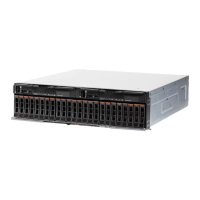
